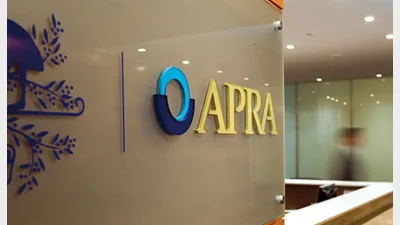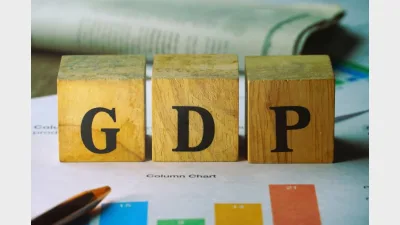CPI exceeds expectations, but growth concerns keep rate cut on table



While the latest quarterly CPI print exceeded expectations, most economists still anticipate a rate cut, especially amid growing downside risks to global growth stemming from uncertainty around US tariffs.
The Consumer Price Index (CPI) rose 0.9 per cent in the March 2025 quarter and 2.4 per cent annually, according to the latest data from the Australian Bureau of Statistics (ABS).
Leigh Merrington, ABS acting head of prices statistics, said: “The March quarter increase of 0.9 per cent follows two quarters in a row of 0.2 per cent rises.
“Annual inflation to the March 2025 quarter of 2.4 per cent was unchanged from the December 2024 quarter.”
Despite a further easing in housing construction costs and rental inflation, the biggest contributor to the overall headline CPI increase was housing, reflecting a rebound in electricity prices as more government subsidies ended.
The more policy-relevant trimmed mean annual inflation rose 0.7 per cent, coming in at 2.9 per cent in the March quarter, down from 3.3 per cent in the December quarter – the lowest annual trimmed mean inflation rate since the December 2021 quarter.
Commenting on the print on Wednesday afternoon, Betashares’ chief economist David Bassanese said that were it not for “new global growth concerns”, the outcome of the May policy meeting may have been more “finely balanced” given the “good but not great” CPI outcome.
“Without tariff risks, there may have been some chance the RBA could have waited for the June quarter CPI before cutting rates further,” Bassanese said.
He said that overall underlying inflation still appears to be tracking broadly in line with the RBA’s expectations and, at best, modestly ahead of expectations.
Namely, in its November Statement on Monetary Policy, the RBA forecast trimmed mean annual inflation to reach 2.8 per cent in the June quarter. For this to be realised, the quarterly gain in trimmed mean inflation next quarter needs to be 0.8 per cent.
Regarding the RBA’s May policy meeting, the chief economist said the only issue now is the size of the rate cut.
“With signs of a Trump backdown and some recovery in markets, global risks are not as intense as they appeared a few weeks ago – though, of course, they remain ever-present,” Bassanese said.
“Accordingly, a traditional 0.25 per cent move seems most likely. That said, a strong case can still be made for a slightly greater 0.35 per cent cut due to both further declines in local inflation plus ongoing global growth risks.”
Bassanese, who had earlier this month called for an off-the-books rate cut, said, barring “a significant escalation in global growth concerns over the next few weeks”, it seems unlikely the RBA would consider a jumbo cut in May.
VanEck head of investments and capital markets, Russel Chesler, said on Wednesday that the “positive results” from the CPI print will “most likely” strengthen the market consensus that the RBA’s next rate cut will be in mid-May.
But while VanEck agreed this is the most likely outcome, Chesler said “we don’t believe it is strictly necessary based on current macro conditions”.
“We would like to see a longer run of the trimmed mean being within the RBA’s target 2–3 per cent range before we start sharpening the knife for further rate cuts,” he said.
Like Bassanese, he said “the elephant in the room is the Trump tariff regime”.
“The longer-term impact of tariff policy on growth and inflation is a global concern, and the latest activity prints in other markets suggest that some downside growth risks might already be materialising in some of our key trading partners, including the US, where the US Economic Policy Uncertainty Index remains close to historical highs,” Chesler said.
For its part, ANZ said it views an RBA rate cut of 25 bps in May as “a near certainty”, given both the downside risks to global and domestic growth stemming from global trade policy uncertainty and the inflation outcomes over the past two quarters.
Similarly, CBA, which had previously stated that a trimmed mean CPI rise of no more than 0.6 per cent quarterly and 2.8 per cent annually would make a rate cut a “done deal”, said on Wednesday: “we remain on course for a 25 bp rate cut in May.”
“The inflation data today was on balance a bit stronger than we anticipated. But it was sufficiently in line with our forecasts, which means we leave our base case for the RBA unchanged,” CBA’s head of Australian economics, Gareth Aird, said.
“Our central scenario for the RBA is for an end-year cash rate of 3.35 per cent.”
As at 29 April, the market had placed a 62 per cent expectation on an interest rate decrease to 3.6 per cent at the next RBA meeting.
In AMP’s CPI-related insights update, deputy chief economist Diana Mousina said financial markets are “overly excited” about RBA rate cuts this year but mostly on the back of potential downside impacts to growth from tariffs, rather than a reflection of the Australian economy.
Tipping a 0.25 per cent cut in May, Mousina said: “We expect another 0.25 per cent rate cut at the August meeting, leaving the cash rate at 3.6 per cent by the end of 2025.”
Recommended for you
Superannuation industry bodies have warned the prudential regulator that some of the more rigid proposals in its Governa...
IFM has firmly opposed any push for publicly disclosing current valuations of private market assets, saying it would “damage the financial interests of investors” and reduce appetite for infrastructure and private business investment.
Subdued GDP figures have bolstered expectations that the RBA could cut rates sooner and, possibly more aggressively, market watchers say.
Australian institutional investors plan to keep their finger on the pulse of private markets, new data has shown, with local investors aiming to further expand allocations into the sector.









